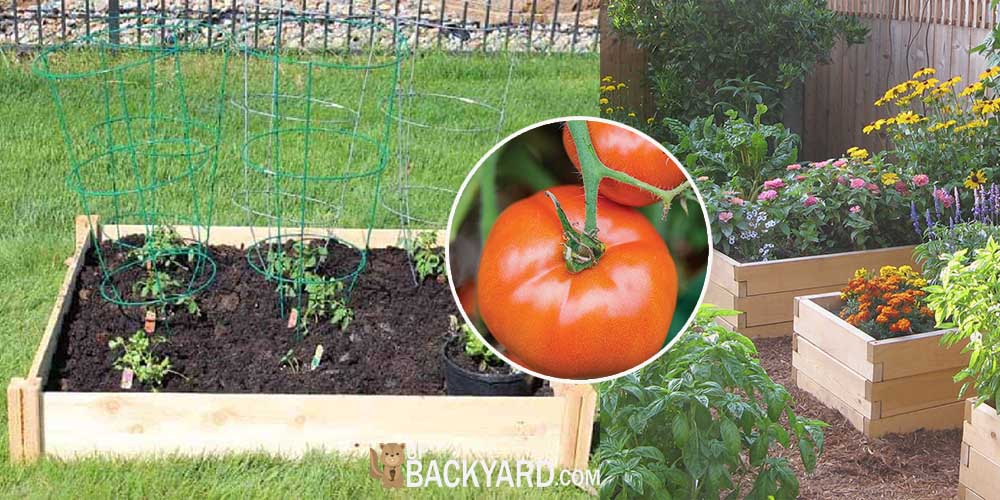Growing tomatoes in a raised garden bed provides many benefits. Using a raised bed allows you to keep your plants off the ground, provides better drainage for the plants, and adds some curb appeal and interest to your garden.
Raised beds also help provide division from other garden crops and prevent a wide spread or overgrowth of certain vegetable varieties. But how many tomato plants can go in a raised 4×4 bed?
The number of tomato plants per 4×4 bed is between 3-5 plants depending on if the tomato variety you are growing is indeterminate or determinate.
You want to ensure your plant does not have to compete for water, sunlight, or nutrients. Overcrowding your planters can lead to disease and severely stunt the growth of the tomato plants.
Read on to learn more about indeterminate and determinate tomatoes, what else you can plant with tomatoes, and what you should never plant with tomatoes.
Indeterminate Tomato Plants
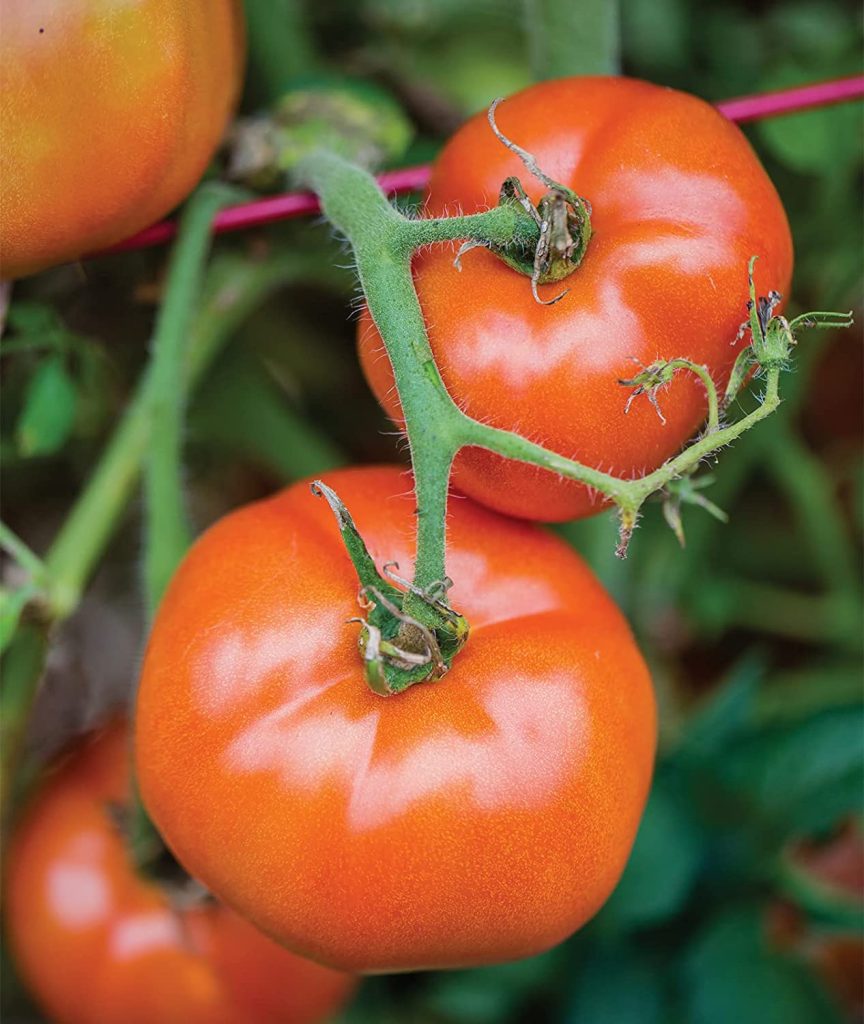
Indeterminate plants continue to grow and have no set width or height. They also depend heavily on cages or stakes.
If you are growing indeterminate tomato varieties, it is best to limit the number of tomato plants in your planter to 3.
This allows enough space for the tomato plants to grow and spread adequately while still receiving enough sunlight, water, and nutrients.
You never want your plants to compete for nutrition or other resources as this can severely stunt their growth.
If a tomato plant does not receive the proper growing conditions, it will not produce many tomatoes.
Indeterminate tomatoes are considered vine tomatoes. Their vines will spread quickly and rapidly across the ground if they are not provided with a structure to grow on.
Tomato cages provide great support for an ever-growing indeterminate tomato plant. You can also use wooden tomato stakes as a way to help prevent the tomato vines from resting on the ground.
Tomatoes that are left to grow on the ground have an increased chance of being spoiled. Moisture can get stuck between them and the ground, causing soft spots that can easily begin to rot.
Tomatoes on the ground are also more likely to be eaten by bugs and predators than those suspended from cages or stakes.
Vine tomatoes can grow incredibly long, so winding around a cage allows the plant to grow upward and be condensed in a space versus left to grow wild throughout the garden.
Indeterminate tomato plants will produce throughout the season. This allows for multiple harvest times and bountiful tomatoes.
To help increase the number of tomatoes produced, pick the ripe tomatoes off the vine as soon as they are ready.
Determinate Tomatoes
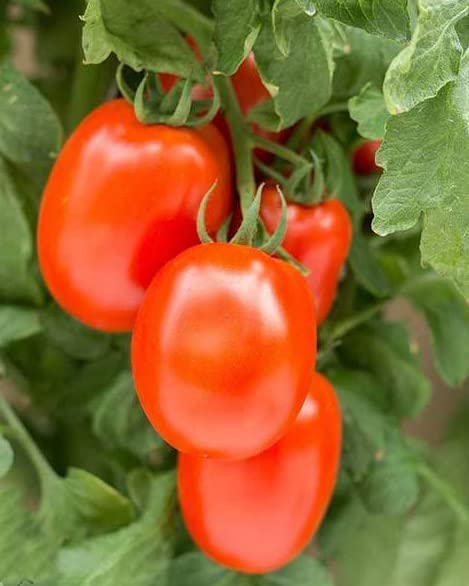
If you are growing determinate tomatoes, you can grow between 3-5 in a 4×4 space.
The number depends on the size the mature tomato plant will reach. You want to ensure that your tomato plants have enough space between them to allow for good air circulation, sunlight, and water to be shared between the plants.
Air circulation helps the tomato plant stay disease free and free of mold or mildew.
The air will dry the leaves after a watering or a rainy day. It also helps dry the morning dew and prevents stagnant water. Stagnant water can leave to mildew and attract pests that breed in it.
Determinate tomato plants are varieties that grow to a certain height and width. Once they reach their adult size, they will not continue to grow.
Since you will know how big the mature plant will become when you are planting it, you can make the decision if 3, 4, or 5 plants will fit in your 4×4 garden bed.
Determinate tomato plants grow into a bush-like structure, versus the indeterminate plants that grow like a vine.
They are also sturdier than their indeterminate counterparts, but still often require a cage or a stack to help provide structure and support for the large tomatoes.
Unlike indeterminate tomato plants that continue to grow and produce more tomatoes throughout the season, determinate tomato plants only produce one round of tomatoes that will be ready to harvest at once.
What Is The Best Type Of Tomato Plant to Grow?
Deciding which tomato plant variety to grow in your garden is entirely dependent on the types of tomatoes you want to harvest.
Indeterminate tomato plants provide a long season with multiple harvest times for tomatoes. Beefsteak, Big Boy, and Sungold tomatoes are all grown on vines of indeterminate tomato plants.
These are some of the more common varieties of tomatoes and can be used in a variety of ways. Many people use Beefsteak tomatoes for slices of raw tomato to add to sandwiches or burgers. Big boy tomatoes are also a great variety for cooking and in salads.
Determinate tomatoes tend to grow into more of a bush-type plant. They still benefit from cages and stakes, but only produce tomatoes once in a season.
These types of tomatoes are usually great for cooking. Roma tomatoes are one of the most commonly grown varieties of determinate tomatoes.
Editor’s Note: It is important to note that because determinate tomatoes tend to all ripen around the same time, that you will end up with large amounts of tomatoes all at once.
This is why many of the determinate tomato varieties are used for canning or sauces.
Being able to process and preserve the large harvest of tomatoes allows you to get the most out of your determinate tomato plant variety.
Many people will grow a mixture of both determinate and indeterminate tomato plants in this garden.
This allows for a steady output of tomatoes from your garden and helps you enjoy the vegetables all season long.
What Else Can I Plant With Tomatoes?
When you are deciding what other plants to grow near your tomato plants, it is important to think of a few different approaches.
While some plants can coexist with tomatoes and not benefit nor harm them, there are plenty of plants that you can grow that will actually provide benefits for your tomato plants.
Marigolds
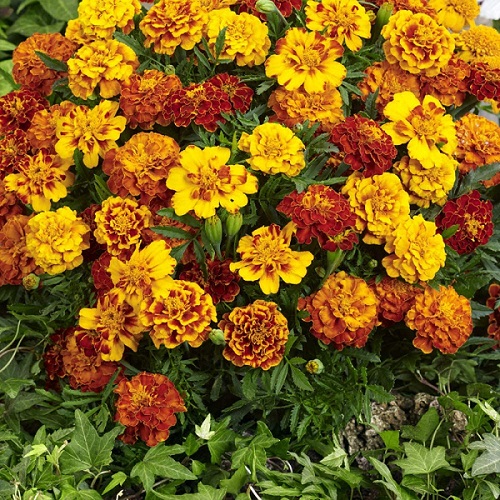
Growing plants like marigolds help provide protection from pests. Marigolds are known to help deter nematodes.
They also attract pollinators to your garden and tomato plants. Tomato plants have flowers that need to be pollinated before they will turn into tomatoes, so increasing the likelihood of pollinators in the area will increase the number of tomatoes your tomato plant will put out.
Basil
Basil is a great herb to grow near your tomato plants. Not only does basil pair beautifully with tomatoes after harvest, they help protect the tomato plants from hornworms and flies.
Both of these pests can be incredibly detrimental to the tomato plant if they infest it.
Garlic
Another great addition to your tomato garden space is garlic. Garlic is known to help prevent spider mites.
Spider mites are often so small that you cannot see them until it is too late and they have already begun damaging the plant.
Chives

Chives are almost always a favorite in any herb garden, but when you grow them with tomatoes, they help protect the tomato from a number of pests.
They are known to repel aphids, nematodes, and spider mites, all of which can severely harm your tomato plants.
Carrots
Carrots are not an herb, but make a good companion plant for tomatoes. The plants help keep the soil loose around the tomato plants.
Carrots can be grown in early spring and continued to be planted and harvested throughout the summer and into the early fall in many places.
What Should I Avoid Planting Near Tomato Plants?
Just as there are plants that help tomatoes, there are plenty of plants you do not want growing near them.
It is important to always research plants and their companion plants before creating the layout of your garden.
You do not want to be almost finished planting and then realize that the vegetables grown near one another will negatively affect the other one.
Fennel
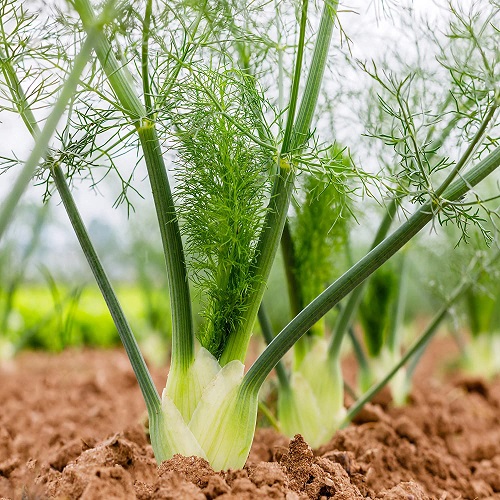
It is a tricky herb that should never be planted near anything. In fact, it is recommended that fennel be grown alone in a pot to prevent any damage to other plants.
Fennel releases substances from its roots that prevent other vegetables or herbs from growing.
Corn
While the tomato fruit worm and the corn earworm sound like different pests, they are actually the same.
It is called the tomato fruit worm if it is attacking tomatoes and the corn earworm of it is attacking corn. For this reason, it is best not to plant corn near tomatoes.
Potatoes
Growing potatoes near a tomato plant can increase the possibility of blight. Blight is a soil disease that can take out an entire season’s worth of tomatoes quickly.
It is best not to plant tomatoes in a place that grew potatoes the season prior as well. Thus helps prevent bacterial infections.
Final Thoughts
Planning a garden takes a lot of work and research. You need to know what your plants will look like when they reach maturity, what they can be companion planted with, and what was grown in that area the prior season.
When it comes to planting a 4×4 raised garden bed, the number of tomato plants that can appropriately fit is determined by the type of tomatoes you want to grow.
Indeterminate tomato plants grow on vines and continue to grow with no predetermined size of shape. These types of tomatoes should be limited to 3 plants per raised garden bed.
Determinate tomato varieties grow to a determined height and width and can be placed 4-5 in a bed. This is because these plants will not grow as wildly as the indeterminate tomato varieties.
Usually, people will plant a mixture of both determinate and indeterminate tomato plants to have the best of both worlds.
You can also plant herbs and vegetables like carrots, basil, chives, garlic, and marigolds with your tomato plants to help ward off pests and attract pollinators.
You should avoid planting fennel, potatoes, and corn near your tomato plants as these can severely stunt the growth or attract pests that will cause infestation.
A little extra planning will help create a successful and abundant garden this season.
